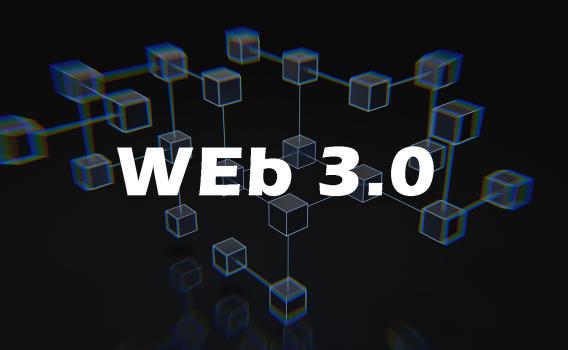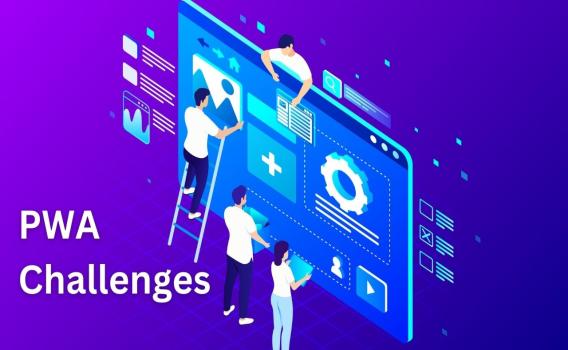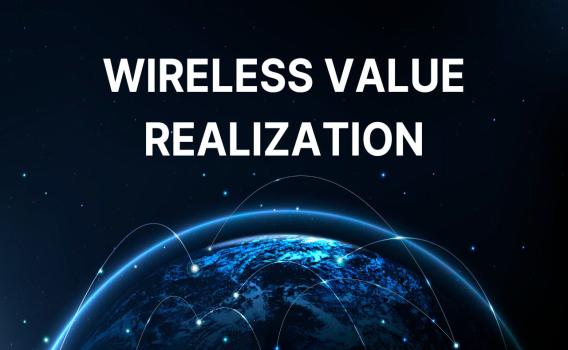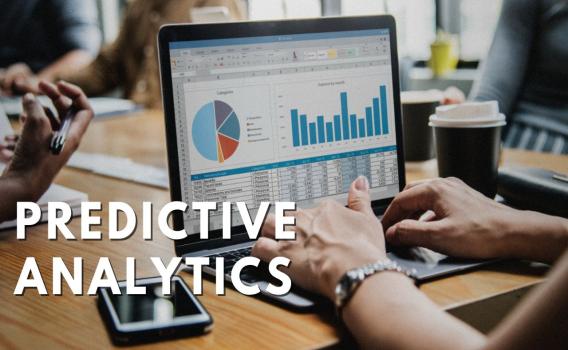


14-02-2024
The internet has come a long way since its inception. From the early days of static web pages to the dynamic and interactive web applications of today, the internet has become an integral part of our lives. But now, a new wave of technological innovation is upon us – Web 3.0. In this blog post, we’ll explore what Web 3.0 is, its potential to revolutionize the internet, and how you can start exploring Web 3.0 today.
Web 3.0, also known as the decentralized web, is the next generation of the internet. It’s a vision of a more open, transparent, and secure web, where users have more control over their data and can interact with applications and services without the need for intermediaries. The decentralized web is built on blockchain technology, which enables decentralized data storage, identity verification, and smart contract execution.
Web 3.0 has the potential to transform the internet as we know it. By decentralizing data storage and removing intermediaries, Web 3.0 can improve the security, privacy, and accessibility of online services. It can also enable new business models and revenue streams for content creators and developers. For example, decentralized finance (DeFi) platforms built on Web 3.0 can provide users with access to financial services without the need for traditional banks.
If you’re interested in exploring Web 3.0, here are some steps you can take today:
- Learn about blockchain technology: Start by learning the basics of blockchain technology, its benefits, and limitations. There are many online resources available, including articles, videos, and courses.
- Install a Web 3.0 browser: To interact with Web 3.0 applications and services, you’ll need a Web 3.0 browser such as MetaMask or Brave.
- Experiment with decentralized applications: There are many decentralized applications (DApps) available on the Ethereum network, including games, social networks, and marketplaces. Try some of them out to get a feel for how they work.
- Participate in decentralized finance: If you’re interested in finance, you can participate in decentralized finance (DeFi) platforms such as Uniswap or Compound to earn interest on your crypto assets.
While Web 3.0 has the potential to revolutionize the internet, there are also some challenges to be addressed. One of the main challenges is scalability. The current blockchain infrastructure can only handle a limited number of transactions per second, which can result in slow and expensive transactions. However, there are ongoing efforts to address this challenge, such as layer-two scaling solutions and new blockchain protocols.
Another challenge is usability. Web 3.0 applications are often more complex and less user-friendly than their centralized counterparts, which can make it difficult for mainstream users to adopt them. However, there are initiatives underway to improve the user experience of Web 3.0 applications, such as the Web3 UX working group.
Finally, there are also regulatory challenges to be addressed. As Web 3.0 applications and services become more mainstream, regulators around the world are starting to take notice. It's important for the Web 3.0 community to work with regulators to ensure that the decentralized web can coexist with existing legal frameworks.
One of the best ways to learn about Web 3.0 and get involved in the community is to attend conferences and meetups. There are many Web 3.0 events around the world, where you can meet like-minded individuals and learn from experts in the field.
Another way to get involved is to contribute to open-source projects. Many Web 3.0 projects are open source, which means that anyone can contribute code, documentation, or other resources. Contributing to open-source projects is a great way to learn new skills, build your portfolio, and make connections in the community.
Finally, you can also invest in Web 3.0 projects and cryptocurrencies. However, it's important to do your research and understand the risks involved before investing in any project or asset.
Conclusion
Web 3.0 is the future of the internet, and it’s already here. By decentralizing data storage and removing intermediaries, Web 3.0 has the potential to improve the security, privacy, and accessibility of online services. If you’re interested in exploring Web 3.0, start by learning about blockchain technology, installing a Web 3.0 browser, experimenting with DApps, and participating in DeFi platforms. The decentralized web is an exciting and rapidly evolving space, and there’s never been a better time to get involved.
Keywords: Web 3.0, decentralized web, blockchain technology, decentralized applications, decentralized finance, MetaMask, Brave, DApps, DeFi, Uniswap, Compound.


14-02-2024
Amid a technological boom, our kitchens and dining tables are not left behind. Imagine a world where your meals are tailored specifically to your dietary needs and flavor preferences, prepared by a machine that knows you better than you know yourself. This isn't a scene from a sci-fi movie; it's the promising future of digital food technology. In this blog post, we will embark on a culinary journey into the future, exploring how digital advancements are transforming the way we consume, prepare, and think about food.
The digital food technology revolution is centered around the integration of advanced tech into every aspect of food - from its sourcing and preparation to its consumption. But what exactly does that entail?
Gone are the days when recipes were abandoned due to a missing ingredient. With 3D food printing and AI-driven grocery shopping apps, missing an ingredient could soon become a problem of the past. 3D food printers are advancing to the point where they can create complex food items, layer by layer, with a push of a button. Meanwhile, grocery shopping apps use artificial intelligence to predict what you'll need, ensuring your pantry is always stocked.
Thanks to digital food technology, one-size-fits-all all is no longer applicable to diet and nutrition. Imagine a kitchen appliance that designs meals based on your specific nutritional needs, allergies, and taste preferences. This isn’t a far-off fantasy. Companies are already developing smart kitchen appliances that can suggest and prepare meals tailored exactly to your body’s requirements, making personalized nutrition accessible to everyone.
Digital food technology is also redefining the dining experience. Virtual reality (VR) and augmented reality (AR) are being used to enhance the ambiance, making dining an immersive experience. Furthermore, apps are being developed to calculate the nutritional content of your meal with just a photo, making it easier than ever to track what you eat.
With every technological advancement, there's a foundation that supports its development. In the digital food realm, several key technologies are making these futuristic dining experiences possible.
3D food printing is at the forefront of digital food technology. It allows the creation of food that is not only nutritious but also appealing in terms of shape, texture, and color. From printing chocolate and pasta to creating meat alternatives, 3D food printers offer endless possibilities for customization and innovation in food.
AI and machine learning algorithms are the brains behind personalized nutrition, capable of processing vast amounts of data about individual health, dietary preferences, and nutritional needs. They can recommend meal plans, adjust recipes, and even control smart kitchen devices to prepare the perfect meal.
Blockchain technology is ensuring transparency and traceability in the food supply chain. By recording every transaction on a secure and immutable ledger, blockchain provides a clear record of where your food comes from, how it was produced, and its journey to your plate. This not only helps in ensuring food safety but also supports sustainable practices by highlighting the environmental impact of food production.
As exciting as these advancements are, they bring forth a discussion about the future of food. How will digital food technology shape our diets, our health, and our planet?
Digital food technology has the potential to significantly reduce food waste and improve sustainability. 3D food printing, for example, can use alternative ingredients such as plant-based proteins or food scraps that would otherwise go to waste. Similarly, AI can optimize food supply chains, reducing the carbon footprint of food transportation and storage.
The move toward personalized nutrition promises a future where food contributes more effectively to health and wellness. By tailoring meals to individual health needs, digital technology can help combat diet-related diseases and promote overall well-being.
Digital food technology is not only changing what we eat but also how we relate to food. It encourages a culture of curiosity, experimentation, and innovation in the kitchen. However, it also raises questions about the role of traditional cooking skills and the preservation of culinary heritage.
The future of eating with digital food technology is ripe with possibilities. It promises a world where food is more personal, sustainable, and engaging. As we stand on the cusp of this culinary revolution, it's clear that technology will continue to play a vital role in shaping our diets and dining experiences.
While there's no telling exactly what the future holds, one thing is certain: the fusion of technology and food is just getting started, and it promises to be a delicious adventure. So, are you ready to take a bite out of the future?


03-02-2024
In the realm of modern web development, Progressive Web Apps (PWAs) have emerged as a promising solution, blending the best of web and mobile applications. While PWAs offer a range of benefits such as offline functionality, fast loading times, and seamless user experiences, it's essential to tread carefully and acknowledge the potential drawbacks that might accompany this innovative approach. In this comprehensive exploration, we'll delve into the possible drawbacks of Progressive Web Apps, shedding light on challenges that developers and businesses should be aware of as they embark on the PWA journey.
1. Introduction to Progressive Web Apps: A Quick Recap:
Briefly revisit the core concepts of Progressive Web Apps, emphasizing their ability to deliver reliable, fast, and engaging user experiences across various devices.
Highlight key features like offline access, push notifications, and responsiveness that contribute to the appeal of PWAs.
2. The Rise of PWAs: Adoption and Popularity:
Explore the increasing adoption of PWAs by major brands and businesses seeking to enhance their online presence.
Discuss success stories and use cases where PWAs have made a significant impact on user engagement and conversion rates.
1. Limited Support on Older Browsers:
Discuss the compatibility challenges PWAs may face on older browsers, limiting the reach of these applications.
Explore strategies for handling graceful degradation and providing fallback options for users on unsupported browsers.
2. App Store Restrictions and Visibility:
Examine the limitations imposed by app stores on PWAs, impacting their discoverability and visibility in platforms like Google Play and Apple App Store.
Discuss potential workarounds and strategies for maximizing PWA visibility.
3. Limited Access to Native Device Features:
Investigate the constraints PWAs might encounter in accessing certain native device features that are readily available to native mobile applications.
Explore the implications for functionality, user experience, and overall app capabilities.
4. Complex Implementation for Advanced Features:
Explore scenarios where implementing advanced features in PWAs, such as background sync or device hardware access, might require intricate solutions.
Discuss the trade-offs between simplicity and complexity in PWA development.
5. Potential Security Concerns:
Examine potential security risks associated with PWAs, including issues related to data storage, third-party APIs, and the handling of sensitive information.
Discuss best practices and security measures to mitigate these concerns.
1. Browser Compatibility and Progressive Enhancement:
Advocate for progressive enhancement strategies to ensure a smooth experience for users across different browsers and devices.
Emphasize the importance of testing and optimizing PWAs for diverse browser environments.
2. App Store Optimization for PWAs:
Discuss optimization techniques for improving PWA visibility in app stores, including metadata, screenshots, and engaging descriptions.
Explore success stories of PWAs that have effectively navigated app store restrictions.
3. Fallback Options and Feature Degradation:
Highlight the significance of providing fallback options for users on unsupported browsers or devices.
Discuss the concept of feature degradation as a strategy for delivering a baseline experience across all user scenarios.
4. Progressive Enhancement for Device Features:
Discuss the concept of progressive enhancement for leveraging native device features, allowing PWAs to gracefully enhance functionality on devices that support advanced features.
Explore real-world examples of PWAs successfully implementing progressive enhancement strategies.
5. Security Best Practices:
Outline essential security best practices for PWA development, including secure data storage, HTTPS implementation, and protection against common vulnerabilities.
Discuss the role of continuous security audits and updates in maintaining PWA resilience against evolving threats.
1. Overcoming Challenges: Success Stories of PWAs:
Showcase examples of PWAs that have effectively addressed the discussed drawbacks and challenges.
Explore the strategies and solutions implemented by successful PWA adopters.
2. Lessons Learned: Developer Insights and Experiences:
Collect insights from developers who have worked on PWAs, sharing their experiences, challenges faced, and lessons learned.
Discuss how the community is actively addressing and overcoming PWA drawbacks through collaborative efforts.
1. Ongoing Evolution and Improvements:
Explore ongoing efforts within the development community and browser vendors to address PWA limitations and enhance their capabilities.
Discuss potential features and advancements on the horizon for PWAs.
2. Integrating PWAs into Holistic Development Strategies:
Advocate for a holistic approach to development that integrates PWAs strategically into broader digital strategies.
Discuss how PWAs can complement existing native applications and web experiences.
As we conclude this in-depth exploration into the possible drawbacks of Progressive Web Apps, it's crucial to recognize that, like any technology, PWAs come with their set of challenges. However, armed with awareness, strategic planning, and a commitment to ongoing improvement, developers and businesses can navigate the PWA landscape with confidence. By acknowledging the potential pitfalls, implementing best practices, and staying attuned to the evolving nature of web technologies, PWAs can continue to flourish as a transformative force in the world of web development. As we collectively embrace the agility to address challenges and seize opportunities, the future of Progressive Web Apps remains a promising chapter in the ongoing saga of digital innovation.


03-02-2024
In the ever-evolving landscape of the internet, the term Web3 has emerged as a beacon of change, promising a decentralized, user-centric, and more interconnected digital future. This comprehensive exploration into the Progress of Web3 aims to unravel its complexities, trace its evolution, and shed light on the groundbreaking technologies and paradigms shaping the next phase of the internet.
1. Evolution from Web1 to Web2 to Web3:
Trace the evolutionary journey of the internet from its static origins (Web1) to the interactive and social phase (Web2) and the current decentralized era (Web3).
Explore the motivations and key characteristics that define each stage, leading to the emergence of Web3.
2. The Pillars of Web3: Decentralization, Interoperability, and User Control:
Delve into the fundamental principles that underpin Web3, including decentralization of data and control, interoperability between platforms, and empowering users with greater control over their digital experiences.
Understand how these pillars contribute to a more inclusive, transparent, and user-centric internet.
1. Blockchain Technology: The Foundation of Web3:
Unpack the role of blockchain technology as the backbone of Web3, enabling secure, transparent, and tamper-resistant transactions and data storage.
Explore different consensus mechanisms, from proof-of-work to proof-of-stake, and their impact on the scalability and sustainability of Web3.
2. Smart Contracts: Automating Trust and Transactions:
Demystify the concept of smart contracts and their role in automating trustless transactions and agreements within the Web3 ecosystem.
Explore real-world use cases, from decentralized finance (DeFi) to non-fungible tokens (NFTs), that showcase the versatility of smart contracts.
3. Decentralized Identity (DID): Empowering Users with Control:
Examine the concept of Decentralized Identity (DID) and its significance in giving users ownership and control over their digital identities.
Discuss the potential impact of DIDs on privacy, security, and the elimination of centralized identity providers.
1. Decentralized Finance (DeFi): Redefining the Financial Landscape:
Navigate the world of decentralized finance, where blockchain and smart contracts enable trustless and borderless financial services.
Explore lending, borrowing, yield farming, and other DeFi applications that challenge traditional financial systems.
2. NFTs and Digital Ownership: Tokenizing the Creative Economy:
Dive into the realm of Non-Fungible Tokens (NFTs), exploring how they revolutionize digital ownership in the art, gaming, and entertainment industries.
Analyze the impact of NFTs on creators, collectors, and the broader concept of intellectual property.
3. Web3 Gaming: Bridging Virtual and Physical Realities:
Explore the fusion of blockchain and gaming in the Web3 era, where players can truly own in-game assets and experiences.
Discuss the concept of play-to-earn and the potential for decentralized virtual worlds.
1. Scalability and Performance: Overcoming Technical Hurdles:
Address the scalability challenges associated with blockchain networks and the ongoing efforts to enhance transaction throughput.
Explore layer 2 solutions and other innovations designed to improve the overall performance of Web3 platforms.
2. Regulatory Landscape: Navigating Legal and Compliance Issues:
Examine the evolving regulatory landscape surrounding Web3 technologies, including privacy, security, and compliance concerns.
Discuss the need for industry collaboration and proactive engagement with regulatory bodies.
1. The Democratization of Content Creation: Web3 and Social Media:
Analyze how Web3 technologies can disrupt traditional social media platforms, enabling content creators to directly interact with their audiences.
Explore decentralized alternatives to centralized social media networks.
2. Internet of Value: Beyond Information to True Digital Assets:
Envision a future where the internet not only transmits information but also facilitates the seamless exchange of value in the form of digital assets.
Discuss the potential for new economic models and the redistribution of value in the Web3 era.
1. Open Source Culture: Collaboration in the Web3 Ecosystem:
Celebrate the spirit of collaboration and open-source development that defines the Web3 ecosystem.
Explore how decentralized communities contribute to the innovation and evolution of Web3 technologies.
2. The Path Ahead: Towards a More Inclusive and Decentralized Internet:
Contemplate the future trajectory of Web3 and its potential to create a more inclusive, equitable, and decentralized Internet.
Discuss the challenges that lie ahead and the role of developers, businesses, and users in shaping the path forward.
As we navigate the intricate progress of Web3, it becomes evident that we stand at the cusp of a digital revolution where the internet transforms from a centralized information highway to a decentralized network of value and trust. The progress of Web3 signifies not just technological advancement but a paradigm shift in how we conceive, interact, and transact in the digital realm. It invites us to reimagine the internet as a more democratic, user-centric, and inclusive space. As we embrace the ethos of decentralization, interoperability, and user control, the progress of Web3 unfolds as a powerful catalyst for digital transformation, promising a future where the internet serves as a true force for positive change. The journey into the Web3 era has just begun, and the possibilities are as vast and dynamic as the decentralized landscape it envisions. Welcome to the future of the Internet!


02-02-2024
In the dynamic landscape of the digital age, where connectivity is the lifeblood of innovation, the concept of Wireless Value Realization emerges as a transformative force. This deep exploration into the realm of wireless technology seeks to unravel the layers of its significance, from the evolution of wireless communication to the myriad ways it adds tangible value to our daily lives. Join us on this journey as we navigate the waves of wireless connectivity, unlocking its potential, and understanding the real-world implications that shape our interconnected future.
1. The Genesis of Wireless Communication:
Trace the origins of wireless communication, from the invention of the telegraph to the groundbreaking development of radio waves.
Uncover the technological milestones that paved the way for the wireless revolution, connecting people across vast distances.
2. The Wireless Spectrum Unveiled:
Dive into the intricacies of the wireless spectrum, exploring the frequencies and bands that facilitate diverse forms of wireless communication.
Understand the role of regulatory bodies in allocating and managing the wireless spectrum for optimal functionality.
1. Wi-Fi Wonders: Transforming Connectivity at Home and Beyond:
Explore the ubiquitous world of Wi-Fi technology, from its inception to its pivotal role in revolutionizing home and business connectivity.
Witness the evolution of Wi-Fi standards, paving the way for faster speeds, broader coverage, and the seamless integration of devices.
2. The 5G Revolution: Unleashing the Power of Next-Gen Connectivity:
Step into the future with the advent of 5G technology, heralding a new era of high-speed, low-latency wireless communication.
Delve into the potential applications of 5G across industries, from healthcare to smart cities, and the transformative impact on user experiences.
3. Internet of Things (IoT): Where Wireless Meets the Everyday:
Explore how the IoT ecosystem thrives on wireless connectivity, connecting devices, sensors, and everyday objects to create a smart and interconnected world.
Uncover real-world examples of how IoT applications enhance efficiency, convenience, and sustainability in various domains.
1. Healthcare: Wireless Innovations for a Healthier World:
Navigate the intersection of wireless technology and healthcare, where telemedicine, remote patient monitoring, and wearable devices redefine patient care.
Examine the value realized in terms of improved accessibility, personalized treatment, and the potential for early intervention.
2. Smart Cities: Pioneering Urban Connectivity:
Embark on a journey through smart cities, where wireless connectivity forms the backbone of intelligent infrastructure, energy management, and public services.
Discover how wireless value realization contributes to sustainability, efficiency, and the overall quality of urban life.
3. Education Empowered: Wireless Connectivity in Learning:
Explore the impact of wireless technology in education, from the proliferation of online learning platforms to the integration of smart devices in classrooms.
Uncover the value realized in terms of accessibility to educational resources, personalized learning experiences, and global collaboration.
1. Security in a Wireless World: Safeguarding Connectivity:
Address the critical issue of security in wireless communication, examining the challenges and solutions to protect against cyber threats.
Discuss the importance of encryption, authentication, and ongoing efforts to fortify the security of wireless networks.
2. Connectivity Gaps: Bridging the Digital Divide:
Acknowledge the existence of digital divides in terms of connectivity and explore initiatives aimed at bridging these gaps.
Highlight the role of wireless connectivity in creating more inclusive, equitable access to information and opportunities.
1. Edge Computing: Redefining Wireless Data Processing:
Peer into the future of wireless technology with the rise of edge computing, where data processing occurs closer to the source.
Explore the implications for faster response times, reduced latency, and the optimization of wireless networks.
2. AI and Wireless Synergy: Enhancing Connectivity Through Intelligence:
Uncover the synergy between artificial intelligence (AI) and wireless technology, where intelligent algorithms optimize network performance and enhance user experiences.
Explore use cases where AI-driven insights contribute to the efficiency and reliability of wireless communication.
As we traverse the realms of wireless value realization, it becomes evident that connectivity is not just a convenience but a catalyst for profound societal transformation. From healthcare to education, smart cities to emerging technologies, the value unlocked by wireless connectivity permeates every facet of our lives. As we stand on the precipice of a future where the waves of wireless communication shape our connected reality, let us navigate this landscape with a keen understanding of its potential and a commitment to harnessing it responsibly. In the tapestry of a wireless-connected tomorrow, the realization of value is not just a concept; it's the pulse that beats in harmony with the heartbeat of our interconnected world.


02-02-2024
In the dynamic landscape of data-driven decision-making, predictive analytics emerges as a beacon of foresight, offering businesses and individuals the power to anticipate future trends and outcomes. This deep dive into the realm of predictive analytics seeks to demystify its intricacies, shed light on its transformative potential across diverse industries, and navigate the ethical considerations that accompany the harnessing of predictive insights.
1. The Foundation: Understanding Predictive Analytics:
Predictive analytics involves utilizing statistical algorithms and machine learning techniques to identify patterns and make predictions about future events.
Explore the fundamental concepts that underpin predictive analytics, from historical data analysis to the construction of predictive models.
2. The Driving Forces: Data and Algorithms:
Delve into the crucial role of data in predictive analytics, highlighting the significance of quality, quantity, and relevance.
Uncover the diverse algorithms that power predictive models, ranging from regression analysis to advanced machine learning algorithms.
1. Business Intelligence: Anticipating Market Trends:
Witness how businesses leverage predictive analytics to gain a competitive edge by forecasting market trends and consumer behavior.
Case studies illuminate how companies utilize predictive insights for strategic decision-making, product development, and marketing strategies.
2. Healthcare Revolution: Personalized Treatment Plans:
Explore the transformative impact of predictive analytics in healthcare, where it aids in early disease detection, patient risk assessment, and the customization of treatment plans.
Real-life examples showcase how predictive modeling enhances patient outcomes and contributes to the evolution of precision medicine.
3. Financial Fortitude: Managing Risks and Enhancing Investments:
Uncover how the financial sector harnesses predictive analytics to manage risks, detect fraudulent activities, and optimize investment portfolios.
Insightful anecdotes highlight the role of predictive models in shaping financial strategies and ensuring sound decision-making.
4. Smart Cities: Enhancing Urban Living:
Step into the realm of smart cities, where predictive analytics plays a pivotal role in optimizing urban infrastructure, managing traffic flow, and enhancing public safety.
Explore the intersection of data-driven insights and urban development, creating cities that are not just smart but also responsive to the needs of their residents.
1. Crafting Predictive Models: From Regression to Machine Learning:
Understand the process of building predictive models, from data preparation and feature selection to model evaluation.
Navigate through the various techniques, including regression analysis, decision trees, and neural networks, that form the backbone of predictive modeling.
2. Overcoming Challenges: Bias, Interpretability, and Model Explainability:
Address the challenges associated with predictive analytics, such as algorithmic bias and the interpretability of complex machine learning models.
Discuss the ethical considerations in predictive modeling and the ongoing efforts to make models more transparent and accountable.
1. Privacy Concerns: Balancing Insights and Individual Rights:
Explore the ethical implications of predictive analytics, particularly concerning privacy issues and the responsible use of personal data.
Dive into the discussions surrounding consent, data anonymization, and the ethical responsibilities of organizations wielding predictive insights.
2. Bias and Fairness: Striving for Ethical Predictive Modeling:
Examine the challenges of bias in predictive models and the ethical imperative to ensure fairness, especially in areas like lending, hiring, and criminal justice.
Discover the ongoing initiatives to develop fair and unbiased algorithms, emphasizing the importance of ethical considerations in predictive analytics.
1. Advancements: From Predictive to Prescriptive Analytics:
Peer into the future of predictive analytics, where advancements lead to the integration of prescriptive analytics, providing actionable insights and recommendations.
Understand how organizations are transitioning from merely predicting outcomes to actively influencing positive results.
2. Democratization: Making Predictive Analytics Accessible:
Witness the democratization of predictive analytics, where tools and platforms empower individuals and businesses with limited technical expertise to harness predictive insights.
Explore the potential of a more inclusive approach, unlocking the benefits of predictive analytics for a broader audience.
The journey into the heart of predictive analytics reveals a landscape teeming with possibilities, challenges, and ethical considerations. As organizations and individuals wield the power to foresee the future, the responsibility to navigate this terrain with wisdom and foresight becomes paramount. In a world increasingly shaped by data, the marriage of human intuition and predictive insights paints a canvas of informed decision-making and a future where foresight guides the way. Let us embark on this journey with a commitment to harnessing the potential of predictive analytics responsibly, ensuring that the road ahead is illuminated not just by algorithms but by the ethical compass that steers us toward a better tomorrow.

©2025 Marvsoft LLP | All Rights Reserved